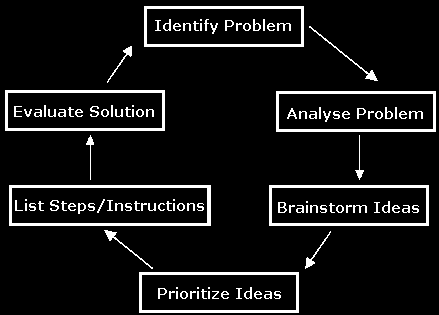Problem-Solving Model
- Identify the problem
- What is the current situation/problem?
- What is the problem to be solved?
- Analyse the problem
- What do we know already about the situation/problem?
- What are our assumptions?
- What is the knowledge base of the person for whom we’re trying to
problem-solve? What can or do they understand?
- What don’t we know yet about the whole situation/problem?
- Brainstorm ideas
- List all possible ideas to solve the problem.
- No value judgment is to be passed on any suggestions.
- The more ideas, the better.
- Prioritize ideas
- Establish pros and cons of each suggestion in step 3.
- Rank the suggested ideas from step 3 according to set criteria.
- List the steps to be taken following the chosen solution
- What are the steps/instructions we should take according to the top
solution ranked in step 4?
- Will these steps/instructions be understood according to the knowledge
base established in step 2?
- Evaluate/test the solution
- Do we have the desired results after following the steps in step 5?
- Does the solution satisfy the needs of the person with the problem?
- What are some of the areas that are not correct/satisfactory? (back to
step 1)
Diagram of the Problem-Solving Model

Tower of Hanoi
In this Tower of Hanoi puzzle we are given a tower of disks (2-8),
initially stacked in decreasing size on one of three pegs. The objective is to
transfer the entire tower to the right most peg, moving only one disk at a time
and never a larger one onto a smaller. Can you solve the problem ?
More Logic Problems
Try these Logic puzzles from plastelina

